
Sevaljevic/iStock/Getty Images
Lanolin is a natural byproduct of processing animal wool, usually that of domestic sheep. The raw material is treated to remove impurities and excess liquids and yield anhydrous lanolin, which literally means lanolin without water. Since lanolin is chemically similar to wax, it has a number of applications in various industries. Lanolin is also structurally similar to lipids found in human skin cells, which is why it’s a common ingredient in skin care products.
Commercial Uses
For centuries, anhydrous lanolin has been used to deter the formation of rust on metals. In fact, medieval knights coated their armor and weapons with lanolin to keep them in good condition. This tradition lives on in the ship-building industry today, where lanolin is used to protect iron and stainless steel from corrosion due to chronic exposure to saltwater. Engineers also depend on lanolin to protect pipelines, tanks and other underwater machinery. On a smaller scale, boating enthusiasts often use anhydrous lanolin to keep barnacles from attaching to propellers.
Anhydrous lanolin is also valued for its lubricant properties and is frequently used to grease moving machinery parts to reduce friction and wear. As an added bonus, lanolin is compatible with a variety of additives, making it versatile and cost-effective in a number of technical processes. Anhydrous lanolin is also non-toxic and readily biodegrades in the environment.
Cosmetic Applications
The cosmetic database provided by the Environmental Working Group lists anhydrous lanolin as a cosmetic ingredient with emollient, anti-static, surfactant and emulsifying properties. This material is commonly found in lip balms, shampoos, hair conditioners, skin cleansers, tanning lotions, baby lotions, body moisturizers and some makeup products.
Pharmaceutical Applications
Anhydrous lanolin is used in ointments, balms and other topical formulas to treat chapped lips, minor wounds and abrasions, burns, diaper rash and other skin irritations. Since lanolin is readily absorbed through the skin, it acts as a carrier base to facilitate the absorption of other medicinal compounds in the product. The Vegetarian Resource Group states that cholecalciferol, also known as vitamin D3, is synthesized from lanolin. This process is achieved through the irradiation of 7-dehydrocholesterol from lanolin in a manner similar to how the human body manufacturers vitamin D from sunlight.
Other Uses
According to the Environmental Working Group, the U.S. Food and Drug Administration has approved the use of lanolin as a food additive. It is routinely used to make chewing gum. Baseball players typically use lanolin-based products like shaving cream to “break in” a new glove or catcher’s mitt. Since anhydrous lanolin naturally repels water, it is commonly found in leather and shoe polishes. Lanolin is also used to waterproof wool garments.
Related Articles
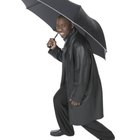
The Different Fabrics of Raincoats and ...
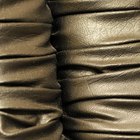
What Is Polyurethane Coated Leather?

What Is Glycerine Used For?

Merle Norman Ingredients

Uses of Coconut Fiber
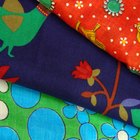
What Is Arnel Vintage Material Fabric?

The Advantages of Wool Clothing

How to Care for Berets

How to Use Kiwi Mink Oil to Waterproof ...

What Is Berber Fleece?

Traditional Clothing in Hawaiian Culture

How to: Eucalyptus Oil as a Flea ...

Properties of Bentonite Magmas

What Is the Highest Temperature That ...
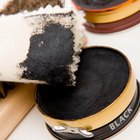
Shoe Polish Ingredients
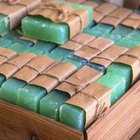
Grandpa's Pine Tar Soap Ingredients

Spandex vs. Polyester

How to Shrink Leather Boots

The Differences of Neoprene & Thinsulate

Chi Silk Infusion Ingredients
References
Writer Bio
Karyn Maier is a seasoned columnist and feature writer. Since 1992, her work has appeared in Mother Earth News, The Herb Quarterly, Better Nutrition and in many other print and digital publications. She is also the author of five books, and is published in six languages.
Photo Credits
Sevaljevic/iStock/Getty Images